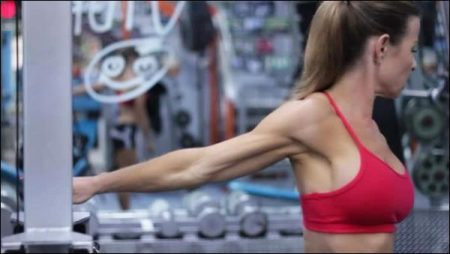A stream of medical studies warns that sitting for extended periods increases your risk of all-cause mortality or, in other words, it puts you at greater risk of dying in the near future. For example, an Australian study published in “The Archives of Internal Medicine” in March 2012 confirms that prolonged sitting makes you more likely to die sooner, no matter how much you exercise. So the solution isn’t just sweating during nonworking hours; you need to find ways to keep moving all day long.
Set Your Timer
Set an egg timer, a smartphone app or an alarm on your wristwatch to go off every 60 minutes. Iowa State University’s Extension and Outreach program recommends doing simple activities like stretching or light strength training every time the alarm sounds.
Lunchtime Outings
Even if you can’t sneak any other exercise or movement into your workdays, consider lunch breaks an opportunity to move. Walk to your favorite lunch spot instead of driving or, if you’re brown-bagging it, find a place you can sit and eat that’s within walking distance instead of staying parked at your desk. Lunch is also a great time to sneak in a little exercise, which doubles as quality visiting time with friends and co-workers. Go walking outside if it’s nice, or do laps inside the building or up and down the stairwells during inclement weather.
Commute Wisely
Work desks aren’t the only place you sit. Cut down on your sitting time by walking, biking or even in-line skating to work instead of driving. Using mass transit can reduce your sitting time, too, if you stand or move around while you’re waiting for the next train or bus. If you have a long time to wait before the next bus comes, walk to the next stop instead of sitting down.
Conduct Smart Meetings
Ask your manager or HR department to implement stand-up or walking meetings; instead of sitting around a conference-room table you can stand and chat, or even brainstorm as you stroll down the hall in a group. The same principles apply during phone conversations; go for a walk if you can, do some light strength-training, or at least pace around your office while you’re on the phone.
Exercise Desks
If your manager or director is particularly open-minded, or if you’re lucky enough to have the ultimate choice in your office furnishings, consider a dedicated “exercise desk.” These units usually pair an adjustable-height desk with a low-geared treadmill beneath it, a desk designed to fit over an existing treadmill, or an exercise bike with a small laptop desk mounted on the handlebars. Even switching from a sitting desk to a standing desk or a sit-stand desk gives you more opportunities to move around, and according to a study performed by C. Reiff et al., from the University of Minnesota’s Department of Kinesiology, it also helps you burn more calories.
At Home
Many of the techniques you use for moving while at work apply at home, too. Pace while you’re on the phone, and shift positions frequently — or even better, go for a walk or do something else active — when friends come over to visit. If you spend a lot of time sitting in front of the computer or television, consider replacing your easy chair with an exercise bike or rower, or switching your at-home desk out for an exercise desk, too. According to the Australian study published in “The Archives of Internal Medicine,” the less time you spend sitting — even at home — the longer you’re likely to live.
Hits: 72
